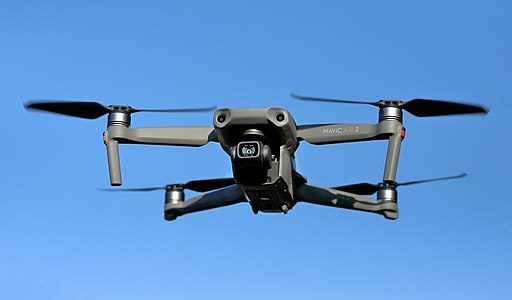
The AUVSI New England UAS and AAM Summit in Cambridge, MA, themed “If We Construct It, Will They Come?” introduced trade and authorities leaders collectively to debate the way forward for UAS and Superior Air Mobility. Among the many featured periods, the Division of Protection (DoD) keynote on coverage and authority implications in countering home UAS threats took middle stage. Delivered remotely by Blake Stone, Coverage Analyst with the Joint Counter-sUAS Workplace (JCO), the session underscored the dimensions of threats posed by small UAS, the DoD’s function, and the collaborative efforts required to mitigate these dangers. (Word: session content material represented Mr. Stone’s private opinions and understanding and can’t be assumed to signify the US Division of Protection.)
Understanding the Joint Counter-sUAS Workplace’s Function
Stone set the stage by explaining the JCO’s mandate because the execution arm for the Secretary of the Military’s duty for counter-small UAS initiatives, specializing in coverage, authority, and interagency interoperability. “Our job is to convey businesses collectively to resolve the issue collectively,” Stone acknowledged, emphasizing that the usthreat applies to federal, state, native, and even non-public sector stakeholders. With drones persevering with to proliferate, creating shared options and advancing airspace consciousness is important for safety nationwide.
The JCO is actively working to combine interagency coordination and create interoperable counter-UAS (c-UAS) methods. Stone highlighted that UAS threats aren’t unique to the DoD or authorities entities—they have an effect on all areas, together with vital infrastructure managed by non-public firms in addition to state, native, and tribal authorities (SLTT). “If the know-how exists elsewhere, now we have to imagine it’ll find yourself right here,” he cautioned, referencing the continued use of drones in world battle zones like Ukraine as a harbinger for potential home dangers.
Evolving Threats and Authorized Challenges
Highlighting the complicated and evolving nature of UAS threats, Stone identified the adaptability of menace actors worldwide. Drones utilized by cartels to smuggle contraband into U.S. prisons, as an illustration, are as technologically subtle as these deployed in army conflicts, he mentioned. This adaptability, coupled with the low barrier to entry for malicious drone use, calls for that home defenses evolve. Nevertheless, Stone acknowledged, “We’re working inside a statutory and regulatory framework that wasn’t designed for as we speak’s threats.”
At present, solely 4 federal businesses maintain the authority to conduct energetic counter-UAS operations, as a result of restrictions such because the Wiretap Act and plane piracy provisions. The Division of Homeland Safety (DHS), in coordination with the DoD, is exploring a possible pilot program to increase counter-UAS capabilities to a choose variety of state and native regulation enforcement businesses. This program would authorize these businesses to make the most of pre-approved counter-UAS sensors and effectors, permitting for extra sturdy protection measures on the state and native stage.
Enhancing Actual-Time Shared Air Area Consciousness
In response to Stone, attaining shared air area consciousness amongst businesses is a vital purpose for the DoD and the JCO. A nationwide framework permitting businesses to entry real-time, unclassified UAS knowledge would assist streamline responses to threats and coordinate defensive actions. The DoD goals to implement frequent sensor knowledge fusion, enabling adjoining amenities to share air area insights. Stone hinted that the Nationwide Capital Area may be among the many first areas to learn from this built-in method, which might rely closely on passive RF (radio frequency) detection to determine unauthorized drones.
The authorized interpretation of passive RF knowledge below Title 18’s Digital Communications Safety Act remains to be below dialogue, Stone added, because it might affect how federal and native businesses use sure counter-UAS applied sciences. Figuring out whether or not passive RF knowledge may be intercepted legally shall be vital to increasing UAS menace detection capabilities.
A Unified Entrance to Sort out Increasing UAS Threats
Stone concluded with an attraction for vital and collaborative pondering, echoing Common Davis from NorthComm: “The answer to the usthreat is larger than anyone company can resolve.” As drones develop in each numbers and functionality, federal businesses, regulation enforcement, and significant infrastructure homeowners should work collectively, constructing a unified method to guard towards future threats.
The dialogue highlighted the DoD’s dedication to fostering interagency integration and addressing coverage challenges whereas encouraging new pathways for collaboration. With shared efforts throughout sectors, the U.S. goals to remain forward of the evolving UAS menace panorama, specializing in safeguarding each nationwide safety and public security.
Learn extra:
Need DRONELIFE information delivered to your inbox each weekday? Enroll right here.
Miriam McNabb is the Editor-in-Chief of DRONELIFE and CEO of JobForDrones, knowledgeable drone providers market, and a fascinated observer of the rising drone trade and the regulatory atmosphere for drones. Miriam has penned over 3,000 articles centered on the business drone area and is a world speaker and acknowledged determine within the trade. Miriam has a level from the College of Chicago and over 20 years of expertise in excessive tech gross sales and advertising and marketing for brand new applied sciences.
For drone trade consulting or writing, E mail Miriam.
TWITTER:@spaldingbarker
Subscribe to DroneLife right here.






